Active 1978 - Present Role Light Infantry | ||
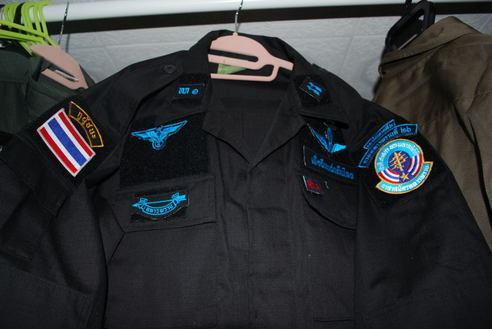 | ||
Royal thai army thahan phran
The Thahan Phran (ทหารพราน; literally "hunter soldiers"; AKA Thai Rangers) is a paramilitary light infantry force which patrols the borders of Thailand and is an auxiliary of the Royal Thai Army (RTA). The Thahan Phran operate in conjunction with the Border Patrol Police (BPP), but are trained and equipped to engage in combat while the BPP is primarily a law enforcement agency.
Contents
- Royal thai army thahan phran
- History
- Controversy
- Special units of the Thahan Phran
- Requirements
- Strength
- Organization
- Activities
- References
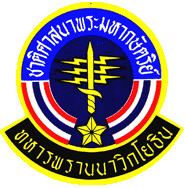
History
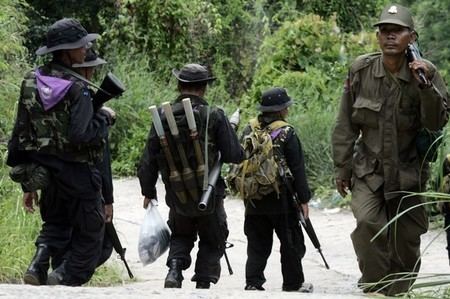
The Thahan Phran was established in 1978 to fight Communist Party of Thailand (CPT) guerrillas and drive them from their mountain strongholds in northeast Thailand. Conceived by General Chavalit Yongchaiyudh, then Director of the Army Operations Centre at RTA headquarters in Bangkok, the unit was to be composed of recruits from regions affected by the communist insurgency, who would be given intensive training courses of 45 days, issued with modern weapons, and then sent back to their villages to mount guerrilla operations against the communists.
Controversy

Some of the Thahan Phran's initial recruits were convicted criminals whose sentences were remitted; others joined to obtain parcels of land granted as a reward for successful campaigns. To some extent the Thahan Phran were intended to supplant the Volunteer Defense Corps, a civilian militia responsible for protecting the local population from guerrillas. By late 1981, Thahan Phran had replaced up to 80 percent of regular army units in counter-insurgency operations on the Burmese, Cambodian and Malaysian borders.
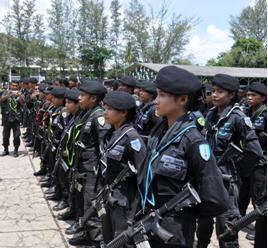
Thahan Phran units conducted numerous operations against Khun Sa in the Golden Triangle and also participated in security actions during the standoff at Prasat Preah Vihear in 2008 and 2009.
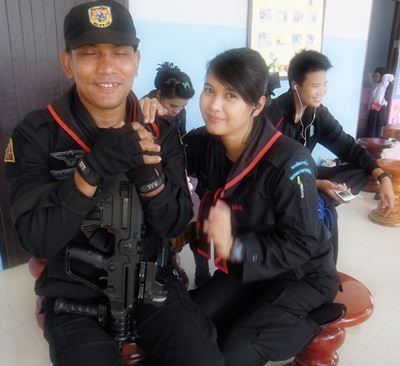
The Thahan Phran have had a troubled history, with units often accused of atrocities, abuse of authority, and involvement in the drug trade. It has been reported that these units include local thugs who make use of their status to commit crimes against their fellow citizens. Numerous reforms have been made since the 1980s, particularly in screening recruits, and it is a more professional force than twenty years ago, but serious problems with discipline and human rights abuses remain.
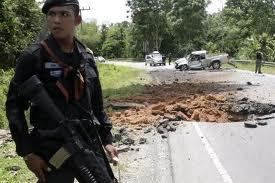
The Thahan Phran are also suspected to have been involved in terrorist activities during the 2010 Redshirt riots in Bangkok.
Special units of the Thahan Phran
In 1979 the influx of Cambodian refugees into Thailand became a significant political problem and a security issue, especially since thousands of them were Khmer Rouge combatants. Thai Prime Minister Kriangsak Chomanan, a professional soldier who had previously been Supreme Commander of the Royal Thai Army, placed the border districts under martial law and authorized the Joint Operation of the Supreme Command to control and provide security for the refugees. The Supreme Command responded by creating Task Force 80 in February 1980, a special Thahan Phran unit charged with defensive duties, refugee management, and the supply of food and weapons to the anti-Vietnamese resistance factions that Thailand supported, particularly the Khmer Rouge, as well as the Khmer People's National Liberation Front and the Armee Nationale Sihanoukiste or ANS. During its brief existence Task Force 80 was accused of frequent human rights violations until it was dissolved in August 1988. One observer summarized the Task Force 80 experiment thus:
"In a country with a dizzying array of different military units, the rangers were among the lowest paid, worst trained, and least disciplined of all Thai soldiers. They were at the bottom of the military status hierarchy: a poorly educated group who could not have made it into the more prestigious units. Indeed, they were regarded in some circles as little better than local thugs in uniform, who had been issued guns at a time when Communism was considered an immediate threat to Thailand's stability. With little supervision and a long history of often personal experience with the border conflict (many were local recruits from those villages that bore the brunt of the violence that spilled across the border), the rangers were not hesitant to take out their frustrations and aggression on the Khmer. Their "protective" presence often created more conflict than it prevented."In 1998 the Salween Special Task Force was created to protect the Salawin National Park and Salawin Wildlife Sanctuary in Mae Hong Son Province.
In 2007 a new Thahan Phran regiment was formed for special duties in Chiang Saen, Chiang Khong and Wiang Kaen districts along the Mekong River in Chiang Rai Province. The regiment is responsible for curbing human trafficking and other illegal movements across the Mekong into Thailand from northwestern Laos. Thahan Phran cooperate closely with the Laotian authorities, informing them when they force illegal migrants to return to the Lao side.
Requirements
Before joining Thahan Phran, all candidates must be able to pass the following requirements:
Lacking the above requirements, the candidates must have a special ability such as relevant regional experience.
Strength
The force is led by regular officers and NCOs, with the other ranks comprising both full-time and part-time personnel. Roughly one-third of these regional-level troops are given more advanced training to become an army-level force. The force completed a major reorganization and downsizing between October 2000 through late 2001. The re-organization saw eight of 21 regiments disbanded by General Surayud Chulanont, then commander-in-chief of the army. This was due to changes in the threats on Thailand's eastern and western borders as well as RTA budget cuts. The total strength is now believed to be about 10,600, a substantial decline from the nearly 20,000 (including reserves) reached in the early 1990s.
Organization
The headquarters at Pak Thong Chai, some 30 km south-southwest of Korat, was closed on 30 September 2000 and command transferred to the army's four regional headquarters. The Thahan Phran now has thirteen regimental headquarters (each with 46 headquarters personnel), 107 90-man companies, and twelve women's squads (each 11-strong).
Five regiments, with 37 companies, are now responsible for guarding the border with Myanmar, the 31st, 32nd, 35th, and 36th Regiments in the northwest, and the 14th Regiment in Kanchanaburi.
Activities
On the western frontier, where there is sporadic fighting, the Thahan Phran work closely with the RTA and the Border Patrol Police. On the eastern border, facing Laos and Cambodia, they now have primary responsibility for border surveillance and protection. Many Rangers have been killed or wounded in recent years during cross-border attacks by Burmese troops or their allies, the United Wa State Army and Democratic Karen Buddhist Army. In February 2001, a 19-man Thahan Phran base designated Unit 9631, situated at Ban Pang Noon near Mae Sai on the Thai-Myanmar border, was captured by 500 Burmese troops. The RTA has tripled the strength of the Thahan Phran in the southern peninsula since violence surged there in 2004.
In October 1981 a 39-man unit of Thahan Phran and Burmese guerrillas attempted to assassinate the drug warlord Khun Sa at the instigation of the US Drug Enforcement Administration. The attempt failed, however in January 1982 a Thahan Phran squad from Pak Thong Chai, together with units from the BPP and the Royal Thai Army, was used to force Khun Sa to move his headquarters from Ban Hin Taek in northwest Thailand across the border into Myanmar.
Units of the Thahan Phran have been sent to the deep south to curb the South Thailand insurgency since 2004. They been responsible for apprehending and killing many key leaders in the area, but have also suffered casualties from ambushes.
